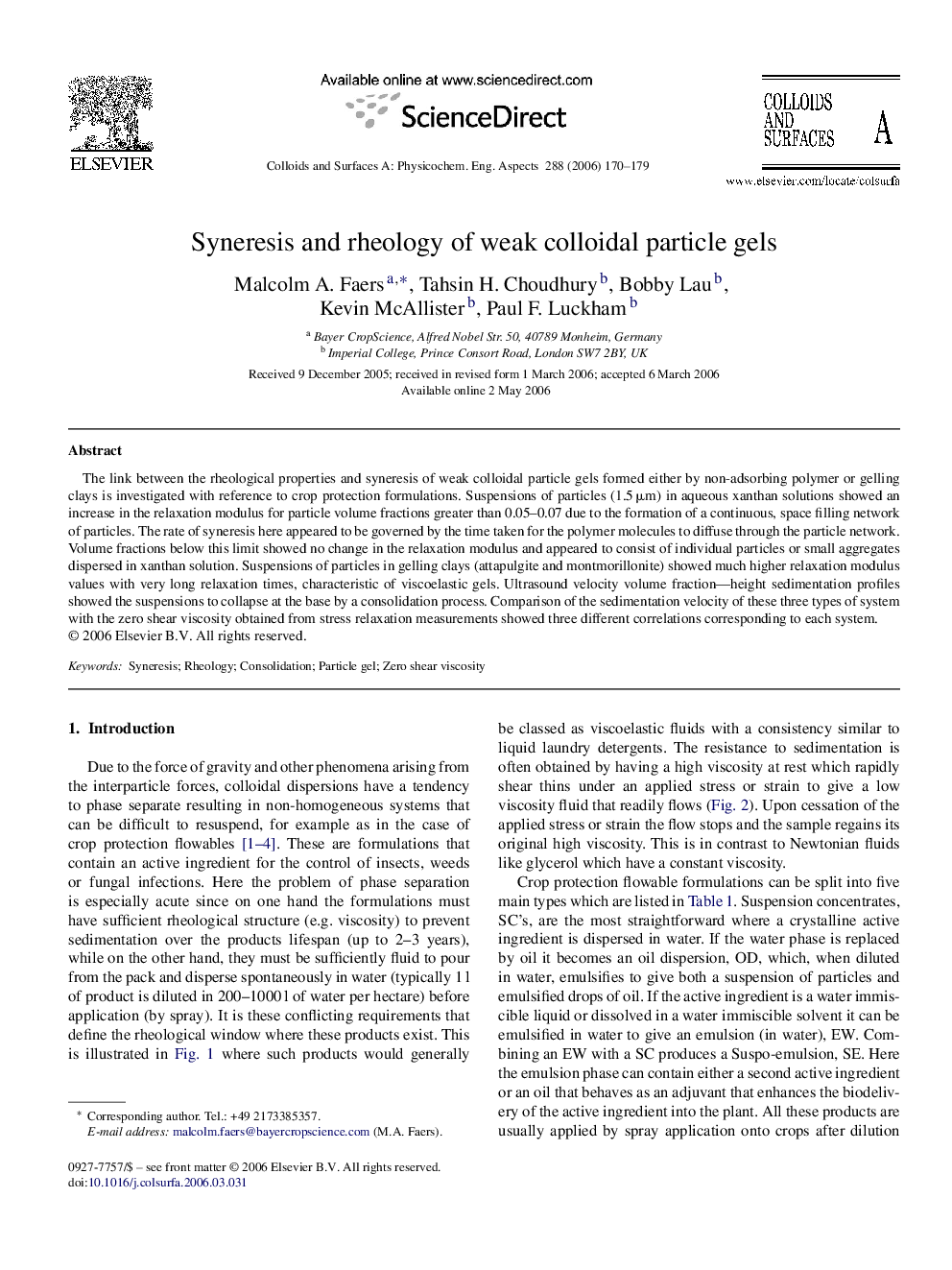| Article ID | Journal | Published Year | Pages | File Type |
|---|---|---|---|---|
| 598119 | Colloids and Surfaces A: Physicochemical and Engineering Aspects | 2006 | 10 Pages |
The link between the rheological properties and syneresis of weak colloidal particle gels formed either by non-adsorbing polymer or gelling clays is investigated with reference to crop protection formulations. Suspensions of particles (1.5 μm) in aqueous xanthan solutions showed an increase in the relaxation modulus for particle volume fractions greater than 0.05–0.07 due to the formation of a continuous, space filling network of particles. The rate of syneresis here appeared to be governed by the time taken for the polymer molecules to diffuse through the particle network. Volume fractions below this limit showed no change in the relaxation modulus and appeared to consist of individual particles or small aggregates dispersed in xanthan solution. Suspensions of particles in gelling clays (attapulgite and montmorillonite) showed much higher relaxation modulus values with very long relaxation times, characteristic of viscoelastic gels. Ultrasound velocity volume fraction—height sedimentation profiles showed the suspensions to collapse at the base by a consolidation process. Comparison of the sedimentation velocity of these three types of system with the zero shear viscosity obtained from stress relaxation measurements showed three different correlations corresponding to each system.
